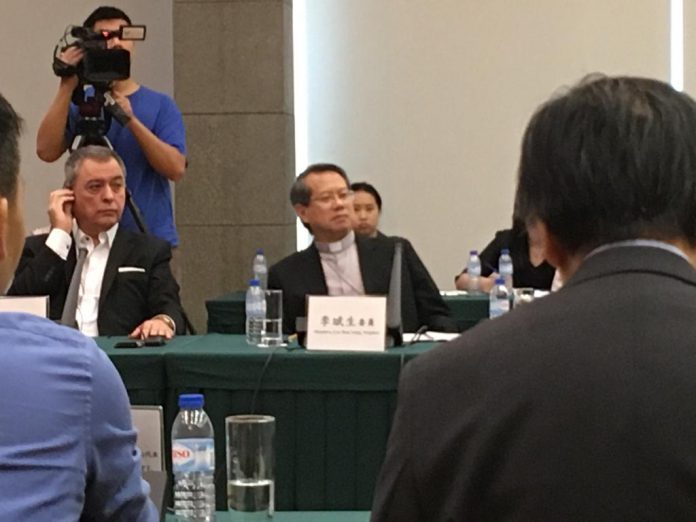Macau (MNA) – Doubts about the impact of future developments on Macau’s heritage fabric and the sustainability of lived heritage topped the concerns of members of the Heritage Committee on Monday during an extraordinary session held to discuss an updated report about the current state of the city’s Historic Centre.
The report, produced by the Cultural Affairs Bureau (IC) in collaboration with the Department for Land, Public Works, and Transport (DSSOPT) and the Cultural Heritage Centre of China, will be submitted to the World Heritage Committee (WHC) on or before the deadline, December 1, 2018.
After it was made clear during today’s meeting that the committee had not received the report, several of its members voiced concerns about height limits established for new developments in the city and the ways urban projects will be incorporated in the Protection and Management Plan (PMP) – included as part of the updated report to be shortly shipped to UNESCO – as well as the ways mulled for safeguarding sites while allowing space for new developments.
Speaking on behalf of the Macau SAR Government, the vice-president of the IC, Deland Leong Wai Man, said that the Bureau has proposed in the report a “mechanism” to be used as a standard evaluation tool in order to assess the impact of future developments to heritage-listed sites, “not only included in the Historic Centre but also in other areas in town.”
According to Zhao Yun, the director of the World Heritage Centre of China within the Academy of Cultural Heritage of China, the WHC was aware of several of the guidelines intended for the development of new urban zones in Macau, that is, the new landfills, and that they had already “heard” the committee on the matter.
She added that the main aim of the report is the “safeguard of heritage of a larger scope,” although she did not clarify what she meant by “larger scope.”
To Wang Lijun, the vice-president of the China chapter of the International Council on Monuments and Sites (ICOMOS), the report has responded to the deliberations of the WHC raised during the 41st meeting to the WHC held in Krakow, Poland, in July 2017 in terms of “safeguarding measures, urban planning, and future developments.”
Another strong point the Mainland China expert raised was the “professional” and “technical” quality of the report, which he praised during the meeting.
Revitalization: Macau is not China
Wang has therefore suggested that the “next step” is to think about ways of integrating old monuments and sites within new enterprises as well as increasing the quality of life of residents living in the Historic Centre and its adjacent areas.
“Heritage shows a part of our lives and has to be protected and transmitted,” noted Mr. Wang. “It has vibrancy, and it is an integral part of the city.”
Carlos Marreiros (pictured, left), an architect who spearheaded the IC during the time of the Portuguese administration prior to 1999, commented on the importance of balancing “cultural, historic, and commercial value” to old heritage sites and give them new life.
“Many residents criticize the use of monuments for commercial enterprises, such as restaurants. I think the government could create more cultural elements in these zones,” noted the architect.
He was supported by Stephen Lee (pictured, right), Macau’s bishop, who argued that the city has a “difference” from Mainland China, given that monuments such as churches and temples are used in everyday life by the local population.
“I think we should pay attention to the ways we could deploy to vitalize these monuments,” he said during the session.
His views were backed by the Secretary for Social Affairs and Culture, Alexis Tam Chon Weng, who clarified to the national heritage experts present during the meeting, Ms. Zhao and Mr. Wang, that Macau is a “Catholic region,” and that it has a constitutive element of “cultural diversity.”




















